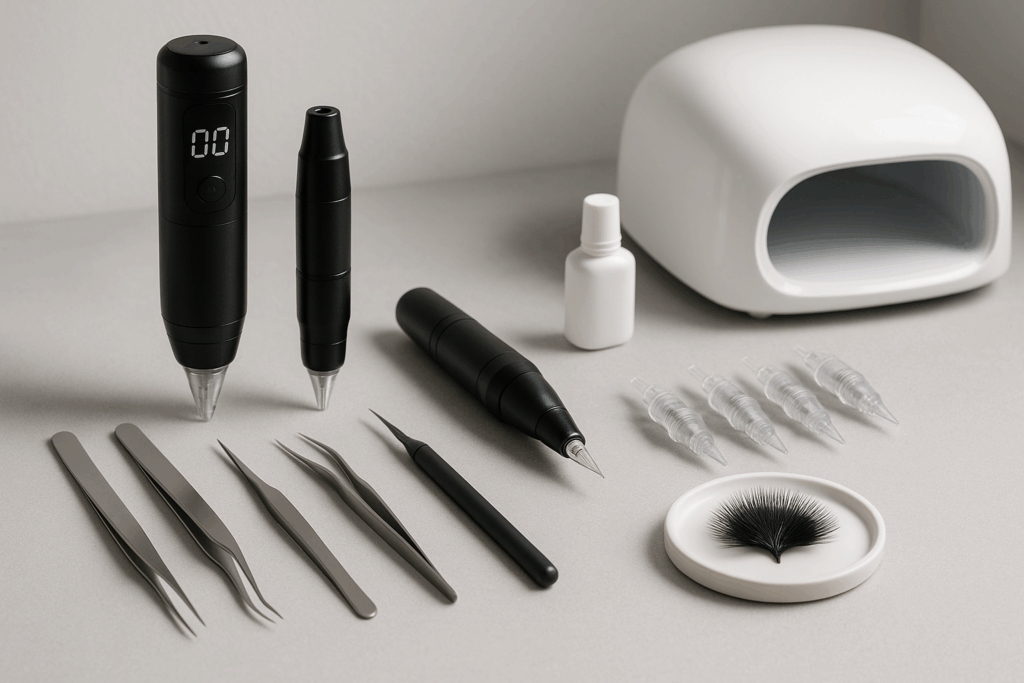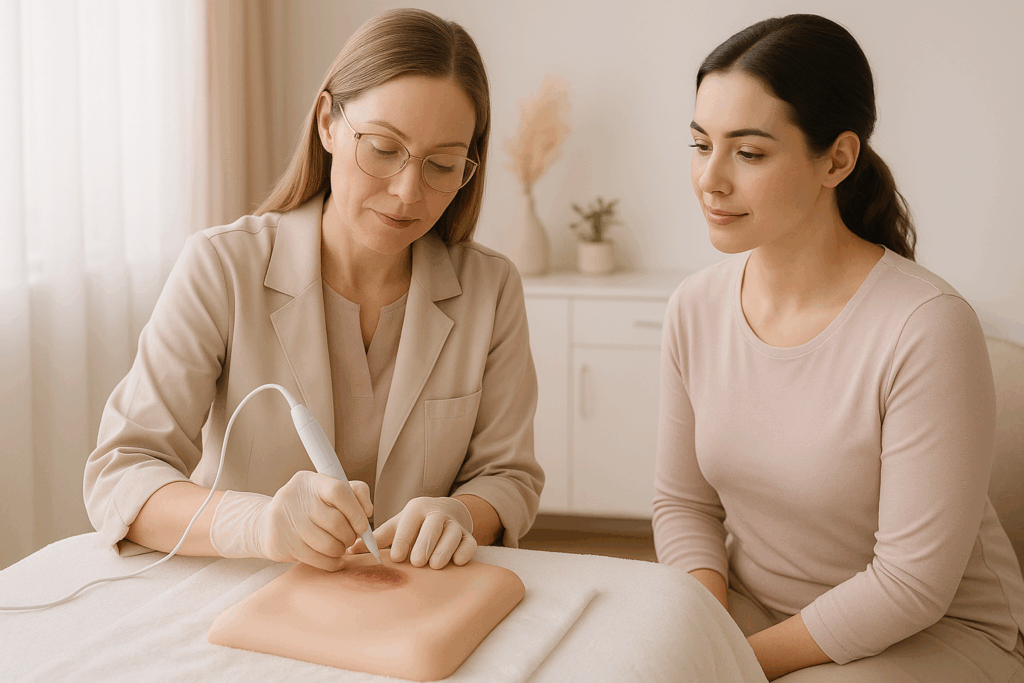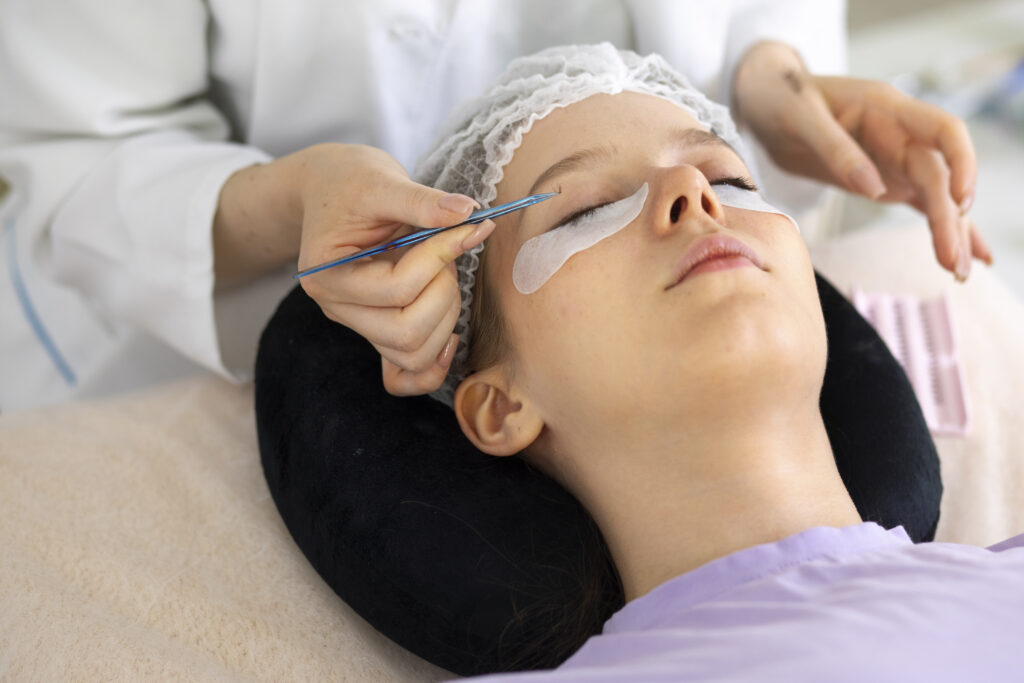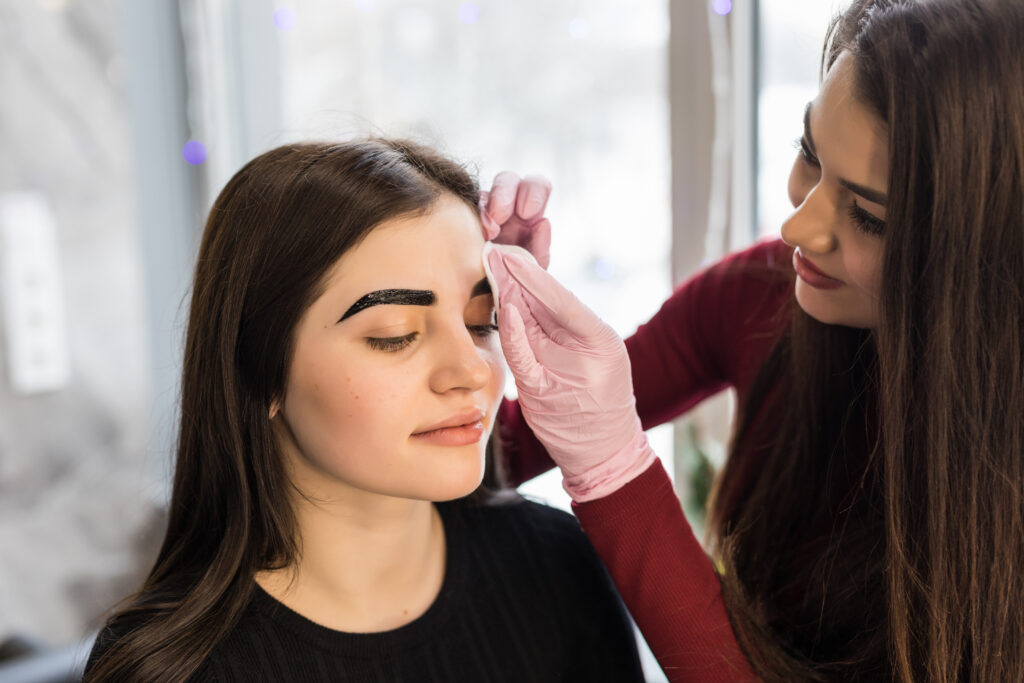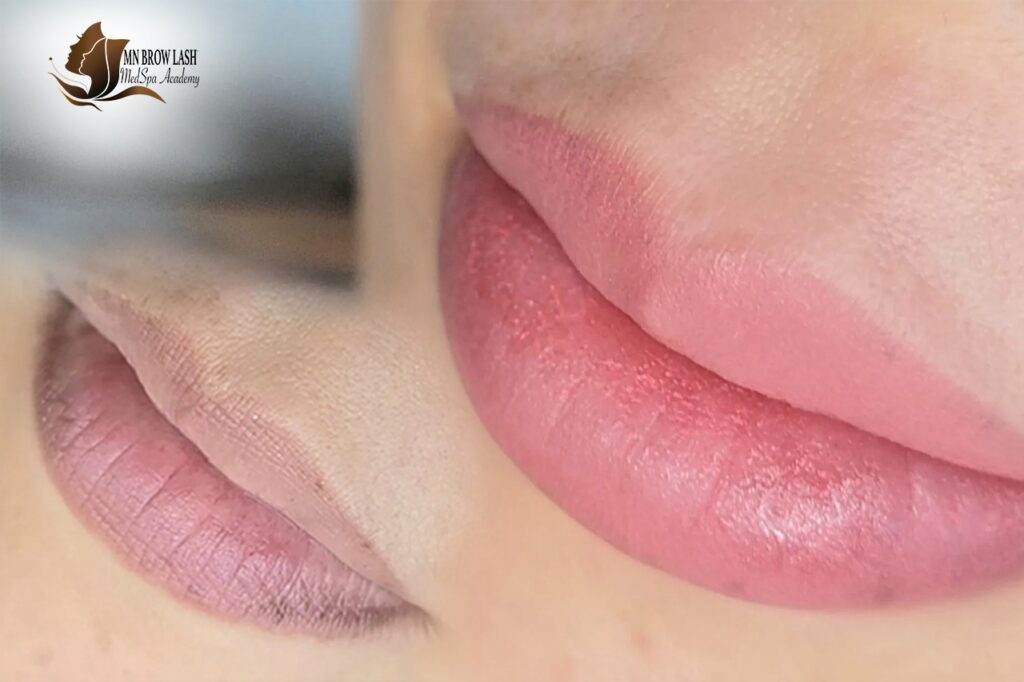Have Questions? Contact Us Now!
- By whitebunniegpa
Guide to Microblading Aftercare: Healing Tips for Every Skin Type
If you’ve recently had your eyebrows microbladed or are considering this popular semi-permanent makeup technique, you’re probably wondering about the healing process. How long does it take? What should you do to ensure the best results? And most importantly, what’s the best healing method for your specific skin type?
In this blog post, we will explore the healing process, providing tips for different skin types, and comparing two popular healing methods: dry healing and moist healing. By the end of this article, you’ll have all the information you need to care for your newly microbladed eyebrows and achieve stunning, long-lasting results.
Understanding the Microblading Healing Process
Before we get into specific aftercare tips, it’s essential to understand the general healing process for microbladed eyebrows. This will help you know what to expect and why proper aftercare is so crucial.
Immediately after the procedure, your eyebrows will appear darker and more defined than the final result. They may feel tender, and slight swelling is normal. This initial phase typically lasts for the first three days.
From day four to seven, your eyebrows may start to feel itchy as the skin begins to heal. You might notice some scabbing or flaking. It’s crucial not to pick at or scratch the area during this time.
Between day eight and fourteen, the color of your eyebrows may seem to fade significantly as the top layer of skin heals. Don’t worry – this is normal and temporary
From day fifteen to thirty, your eyebrows will gradually darken again as the skin continues to heal and the pigment settles.
By day thirty to sixty, your eyebrows should have settled into their final color and shape. Any remaining healing should be complete.
Now that we understand the general timeline, let’s explore the best healing suggestions for different skin types.
Healing Suggestions for Different Skin Types:
Dry Skin:
If you have dry skin, your main concern during the healing process will be preventing excessive dryness and flaking. Use a mild, fragrance-free cleanser to wash your face, avoiding direct contact with your eyebrows. Hydration is key, so apply a thin layer of recommended aftercare ointment to keep the area moisturized. Avoid hot showers as they can further dry out your skin; stick to lukewarm water when washing your face. Consider using a humidifier in your bedroom to add moisture to the air and prevent excessive drying. Be patient with flaking, as your skin may flake more than other skin types. Resist the urge to pick or peel!
Oily Skin:
If you have oily skin, your main challenge will be controlling excess oil production without over-drying the healing area. Use clean blotting papers to gently remove excess oil throughout the day. Choose non-comedogenic skincare products to avoid clogging pores. The dry healing method (which we’ll discuss in detail later) may be particularly beneficial for oily skin types. If you choose to moisturize, use only the recommended aftercare products and apply sparingly. Be aware that oily skin often takes longer to heal, so be patient and follow aftercare instructions carefully.
Combination Skin:
For those with combination skin, you’ll need to balance the needs of both dry and oily areas. You may need to use different aftercare techniques for different parts of your eyebrows, depending on the skin in that area. Focus on gentle cleansing with a mild, pH-balanced cleanser that won’t strip your skin or add excess oil. Be strategic with moisturizing by applying aftercare ointment more liberally to drier areas and more sparingly to oilier zones. Monitor your skin closely and pay attention to how different parts of your eyebrows heal, adjusting your care routine accordingly. You might benefit from alternating between dry and moist healing techniques.
Sensitive Skin:
If you have sensitive skin, your primary goal will be to minimize irritation and protect the healing area. Before applying any new product to your eyebrows, test it on a small area of skin to check for reactions. Use only the aftercare products provided or recommended by your microblading artist. Stay away from skincare products containing fragrances, alcohol, or other potential irritants during the healing process. When cleaning or applying aftercare products, use the lightest touch possible to avoid irritating your skin. Some people with sensitive skin find relief with natural products like aloe vera or calendula, but always check with your artist before using these.
Mature Skin:
As we age, our skin becomes thinner and may take longer to heal. Prioritize hydration, as mature skin often needs extra moisture, so don’t skimp on the recommended aftercare ointment. Be patient, as your skin may take longer to heal. Don’t be discouraged if you don’t see results as quickly as you’d like. Protect your eyebrows from direct sunlight, as mature skin is more susceptible to sun damage. Talk to your doctor about supplements like vitamin C or collagen that may support skin healing. Once fully healed, very gentle exfoliation can help keep your eyebrows looking fresh by removing dead skin cells.
Acne-Prone Skin:
If you’re prone to acne, you’ll want to focus on keeping the area clean without triggering breakouts. Gently cleanse the area twice daily with a non-comedogenic, fragrance-free cleanser. Resist the urge to touch your eyebrows, as this can transfer bacteria and oil from your hands. If you choose to use aftercare ointment, apply it very sparingly to avoid clogging pores. Once your eyebrows are fully healed, you can carefully incorporate salicylic acid products around (but not on) your eyebrows to manage acne. Be vigilant about any unusual redness, swelling, or discharge, as acne-prone skin may be more susceptible to infection.
Now that we’ve covered healing suggestions for different skin types, let’s dive into two popular healing methods: dry healing and moist healing. Understanding the pros and cons of each can help you decide which method might work best for you.
Dry Healing vs. Moist Healing:
When it comes to microblading aftercare, there are two main schools of thought: dry healing and moist healing. Both methods have their advocates, and the best choice often depends on your skin type and personal preferences.
Dry Healing:
Dry healing involves letting your eyebrows heal without applying any ointments or moisturizers. The idea is to let the skin repair itself naturally without any interference. This method has several advantages. By not applying any products, you minimize the risk of introducing bacteria to the healing area. Dry healing requires minimal effort – you simply leave your eyebrows alone to heal. Some people find that their eyebrows scab and flake more quickly with dry healing, which can lead to a faster overall healing process. If you have naturally oily skin, dry healing can help prevent excess oil from interfering with the healing process. There’s also a lower risk of color dilution since you’re not applying any products that could potentially dilute the pigment.
Moist Healing:
Moist healing involves applying a thin layer of recommended aftercare ointment to keep the eyebrows moisturized during healing. This method can significantly reduce dryness and itching, making the healing process more comfortable. If you have dry skin, moist healing can provide the extra hydration needed for optimal healing. Many people find moist healing to be more comfortable overall, with less tightness and itching. Moisturized skin may be less likely to develop thick, hard scabs that are prone to premature falling. With moist healing, you have more control over the healing environment and can adjust the amount of moisture based on how your skin is responding.
On the downside, if not done properly, moist healing could potentially introduce bacteria to the healing area, increasing the risk of infection. It requires more maintenance, as you’ll need to apply aftercare ointment regularly and be careful about keeping the area clean. There’s also a risk of over-moisturizing, which can lead to clogged pores or delay the healing process. If too much moisture is trapped against the skin, it could potentially dilute the pigment. Moist healing may not be ideal for those with very oily skin, as it could lead to excess oil production and slower healing.
Microblading aftercare is a crucial part of achieving beautiful, long-lasting results. By understanding your skin type and choosing the right healing method, you can ensure that your eyebrows heal properly and look their best.
Remember, everyone’s skin is unique, and what works for one person may not work for another. Don’t hesitate to communicate with your microblading artist throughout the healing process if you have any questions or concerns.
At MN Brow Lash & Medspa Academy, we’re committed to helping you achieve the eyebrows of your dreams. From the initial consultation to the final reveal of your healed eyebrows, we’re here to support you every step of the way.
Frequently Asked Questions:
Can I get my eyebrows wet after microblading?
It’s best to keep your eyebrows dry for the first 7-10 days after the procedure. When washing your face, carefully avoid the eyebrow area. After this initial period, you can gently cleanse the area as directed by your artist.
How long does microblading last?
Microblading typically lasts between 1-3 years, depending on your skin type, lifestyle, and how well you follow aftercare instructions. Most people opt for touch-ups every 12-18 months to maintain the best results.
Is microblading painful?
Most people experience minimal discomfort during microblading. A topical numbing cream is usually applied before the procedure to reduce any pain. Some clients describe the sensation as a slight scratching feeling rather than sharp pain.
